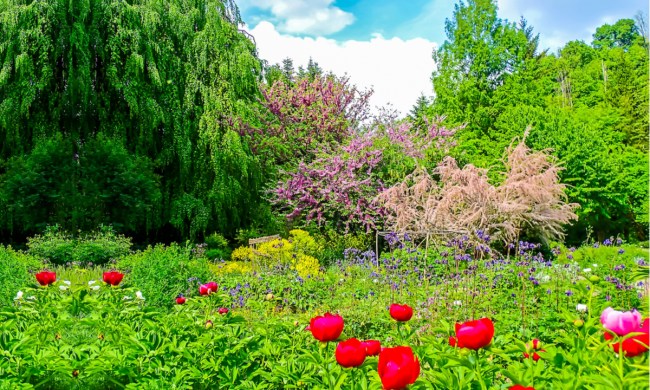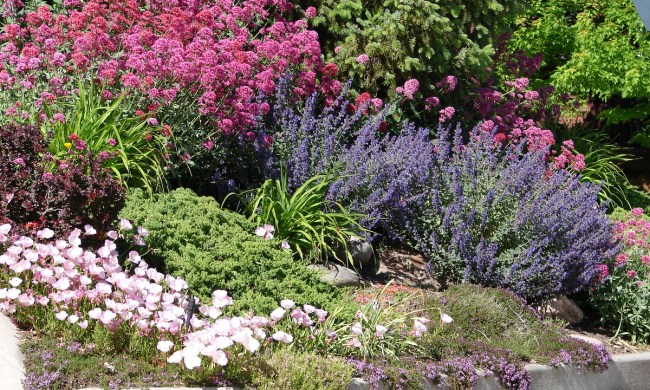Pollinators come in many sizes and shapes, from beautiful butterflies to fuzzy bees, and even less loveable varieties like wasps and beetles. Pollinators play an important role in our ecosystem, letting fruit grow and seeds develop, and many gardeners enjoy having a pollinator garden to attract and support them.
There are many terrific options you can choose from when planning your pollinator garden, but gooseneck loosestrife is one you may not be familiar with. Aside from its delightfully goofy name, this flower is pretty and pollinators love it. Here’s what you need to know about growing it.
What is gooseneck loosestrife?

Gooseneck loosestrife (Lysimachia clethroides) is a beautiful flowering plant that typically has white flowers. The name gooseneck comes from the flower spike’s distinct shape, which curves in a loose S shape. This shape, plus the white flowers, makes the plant resemble a goose’s neck. It’s native to East Asia, and it is considered invasive in certain parts of the U.S. due to its more aggressive growth speed and spread. However, as long as you take steps to control its spread or grow it in a container, gooseneck loosestrife can grow safely in your garden.
The cut flowers make wonderful decorations, thanks to their unique shape. It may surprise you to learn that gooseneck loosestrife is actually in the primrose family! Despite their many differences, both primroses and gooseneck loosestrife are members of the Primulaceae family.
What pollinators are attracted to gooseneck loosestrife?

If you want to add gooseneck loosestrife to your pollinator garden, it’s nice to know what pollinators you can expect to see. Bees and butterflies both love this plant, making it a good choice for butterfly gardens or if you’re trying to attract bees to your vegetable garden. In addition to pollinators, gooseneck loosestrife is also popular with hummingbirds.
Due to its spreading habit, gooseneck loosestrife isn’t always a great choice if your pollinator garden is already full. However, if you have empty space that needs to be filled or want a few containers to attract pollinators and hummingbirds to your porch, patio, or balcony, then gooseneck loosestrife is a good fit.
Planting gooseneck loosestrife

Plant your gooseneck loosestrife flowers in full sun to partial shade. Make sure the soil or the container they’re growing in is a well-draining type. Planting gooseneck loosestrife is easy, but controlling its spread is a bit harder. Whether you’re concerned about your gooseneck loosestrife becoming invasive in your neighborhood or simply crowding your other plants, control is important. Growing it in containers is one way to control it, but not the only way.
Place a boundary or border around the gooseneck loosestrife. This can be a full fence, low wall, garden pathway, or ring of decorative stones. The boundary can slow the spread of the plant, but more importantly, it serves as a visual indicator for when the plant has spread too far. If you see gooseneck loosestrife popping up outside of the boundaries you set for it, pull up the plant with a shovel or hoe.
Caring for gooseneck loosestrife

Gooseneck loosestrife care is simple. Water it weekly unless it has rained, and add mulch around it during fall and winter. Leaf mulch or leaf mold is a good choice, but any mulch will do. Pruning and deadheading your gooseneck loosestrife is another important care requirement. This encourages healthy growth and repeat blooming, but can also help control the size and spread of your plant. By encouraging your plant to funnel its energy into growing more flowers and stems, it will have slightly less energy to put toward spreading. However, this alone won’t keep it from spreading, so remember to dig up any gooseneck loosestrife plants that grow outside the boundary.
As the silly name sounds, gooseneck loosestrife is a delightful plant that can add joy and whimsy to your garden. Whether you grow it in a container or in your garden, the curving shape of the flower spikes is sure to bring a smile to your face. These plants are easy to plant and care for and are perfect for beginners and experienced gardeners alike, and they’ll bring many pollinators to your garden.




